As children, we often play with many different toys of varying popularities. Some toys we enjoyed more than others. Many times, those toys we once loved go missing in our minds until someone reminds us of them again. We see pictures from those childhood days or come across the item itself in storage. All those feelings of nostalgia come flooding back and we realize how precious these toys once were to us. Also, with the continual growth of toy collectors worldwide, many people begin to collect their favorite toylines from the past and display them for years to come. Many toys from decades ago not only spark nostalgia and make people remember days of imaginative play but some also hold high value today. Follow along in our blog with us as we will dive into 10 toylines you loved from the past.
Join Us in Our Blog of 10 Toylines You Loved
Our list includes toys that were once popular but companies no longer produce them. Likewise, this list will also include toylines that showed popularity only for a short time. Some toys we will mention remain in production today, however, people forgot about them after their initial popularity and now get to remind themselves of those toys of the past. Please keep in mind our list may appear different than other lists. This is what we gathered as toylines people may have forgotten they loved. Stick around with us as we dive into each loved toyline of the past.
1. Street Sharks
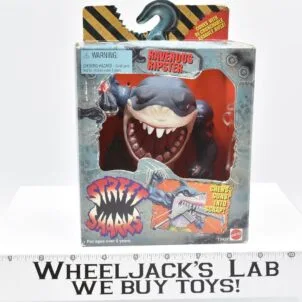
First up on our list of 10 toylines you loved but may have forgotten, we will mention Street Sharks. This action figure toy line released along with an animated television show, both in 1994. The animated series by DIC Productions, L.P., and Bohbot Entertainment featured the incredible storyline with the focus on epic half-shark/ half-man anthropomorphic characters. This animated series aired through 1997 and the toyline along with the series became a cultural phenomenon. Many Gen Xers and Millennials see these awesome toys from the 90s and remember their childhood days when they played with these figures. From series 1 to series 4, toy company Mattel released new and unique toys time after time. Mattel came out with the heroes and villains for children to reenact favorite scenes from the show or make up their own stories.
These Street Sharks toys all included accessories corresponding to the characters for more intricate play opportunities. The first series of figures included the characters Slober, Slash, Ripster, Streex, Jab, Killamari, Dr. Piranoid, and Big Slammu. Then, the second series of figures featured Ripster, Jab, Streex, Dr. Piranoid, and Big Slammu in new designs. Series three then featured another version of Streex along with Ravenous Ripster, Moby Lick, and Rox. Lastly, series four includes Jet Pack Lab, Turbo Jab, Pool Shark Ripster, Moto Streex, and Super Slammu. Slugger Slammu, Mantaman, Repteel, PowerElite Piranoid, and Radical Bends all get featured in series four. The four mutant human-shark brothers with their friends defending against the evil Dr. Piradigm and other enemies, take form in these super nostalgic toys of the past.
2. M.U.S.C.L.E. Figures
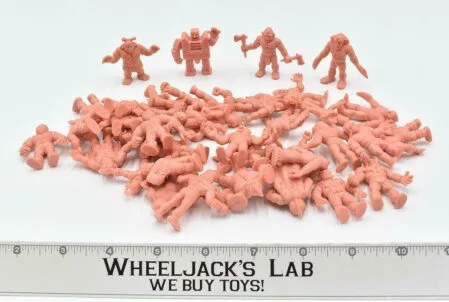
Coming up next on our blog, we have the M.U.S.C.L.E. figures. These small, detailed wrestling figures first released in Japan by Bandai from the Kinnikuman manga and anime series. They then later released in the U.S. and Canada by Mattel in 1985. The acronym M.U.S.C.L.E. stands for Millions Of Unusual Small Creatures Lurking Everywhere. This acronym really sums up the small figures, standing at 2 inches tall, and adds a unique edition to the loved toyline. Since each figure featured the same pink, flesh-like color at the beginning, they sold for only a couple dollars so people everywhere could easily collect them. They released in 4 packs, 10 packs, and 28 packs and each featured a unique design with great personality. A total of 233 different unique designs of M.U.S.C.L.E. figures released in the U.S. and sparked to popularity through 1987.
The other parts of the M.U.S.C.L.E. franchise helped gain the popularity of the figures including the anime series, comic books, and video game. Later on in the toyline, Mattel began releasing some of the original figures in different colors. A total of nine additional colors released in these small sized M.U.S.C.L.E. figures. These colors include red, pink, light blue, dark blue, light orange, dark orange, dark purple, light purple, and neon green. These figures quickly became one of the most sold toylines in 1986. These small, mighty characters still hold fond memories for many people as they remember collecting and playing with them.
3. Tamagotchi
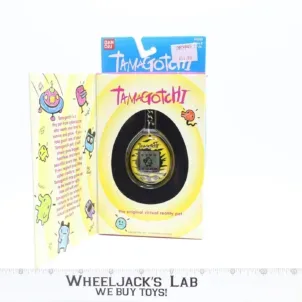
Tamagotchi takes the next place on our 10 toylines you loved but may have forgotten blog. Especially for millennials, these toys bring back fond memories from their childhood. Tamagotchis first released in Japan on November 23, 1996. They then released in the U.S. on May 1, 1997. These toys hit initial popularity with tens of millions of units sold by September of 1997. Tamagotchi, the handheld virtual pet toy, released by Bandai. These egg-shaped, easy to carry around toys, featured the virtual pet to take care of. The goal of caring for your pet and making it happy by feeding it, cleaning up after it, and playing with it, kept people all around the world intrigued for years. The more the virtual pet develops, the more people desire to continue playing and keeping their pet happy.
Many children and teens in the 80s loved taking care of their own pets without the responsibility of a real pet. Along with this, people took these toys everywhere due to their small, handheld size. Tamagotchi pets become unwell when not taken care of. They may get unhappy, sick, and even die which caused many people to continue taking care of their pets day after day. Tamagotchis hit popularity for the next couple years through 1998 when Bandai lost money due to overproduction and unsold toys. These loved toys still remain in production today but unfortunately don’t rise to the same popularity among the initial release. However, when people see these old toys or the new releases, their memories bring them back to their own childhoods, taking care of these transforming virtual pets.
4. Stretch Armstrong
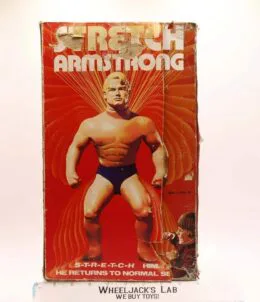
The incredible Stretch Armstrong toys first released in 1976 by Kenner. This iconic stretchy, rubbery action figure holds many nostalgic memories for millions of people. Made of latex rubber and a corn syrup-like inside, these Stretch Armstrong toys held the ability to stretch up to 4 or 5 feet and then go back to their original size. The stark distinction between other figures released at this time and the Stretch Armstrong figures remained clear. No other figures at the time held the incredible ability to stretch, form, and literally tie into knots. Many different versions of Stretch Armstrong released, with about 67 different versions before 1990. Jesse D. Horowitz and Kuhn designed this figure and originally wanted two body types: a sumo wrestler and a blonde, muscular man. However, they decided to only release the blonde, “All-American” muscular man look instead of both.
Originally, they also wanted to use springs for the stretchy factor, however they developed their liquid sugar corn syrup-like consistency to achieve the stretch factor instead. From the late 1970s to the early 1980s, Stretch Armstrong rose to the most popularity. The character’s popularity began to decline around 1981 when the line discontinued due to the sales in 1980. Millions of people remember the days they stretched Armstrong as far as they possibly could and get nostalgia from seeing this loved iconic character.
5. Fisher Price Little People
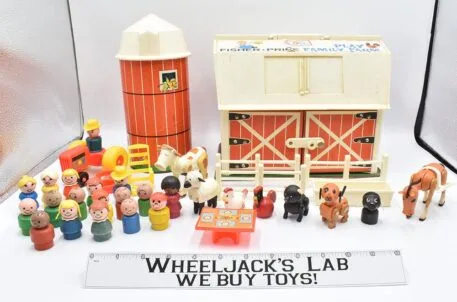
Coming in halfway through our 10 toylines you loved but forgot, we have the Fisher Price Little People toys. Although these toys released for multiple decades, new changes often leave people forgetting what the original Fisher Price Little People sets were like. Beginning in 1959, these original wooden characters with round peg-like bodies saw popularity for many years. These initial toys released as part of the “Play Family” line which included multiple playsets that encouraged imaginative play for young children. However, the 1980s-1990s brought some changes to the toyline with concerns of the smaller figures as a choking hazard to children.
In 1991, the new toys labeled “Chunkies” featured larger, rounder characters with molded hair. These larger toys, safer for children, began releasing as the Little People larger figures with similar characteristics until 1997. During this year, more changes began to take place with the characters gaining arms, hands, and more detailed facial features. While the new toys and playsets remain popular among children today, the original Fisher Price Little People remain one of the most loved toylines among multiple generations of people.
6. Furby
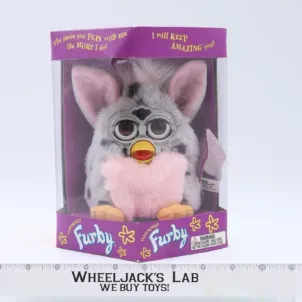
The popular Furby toy from 1998 saw it’s initial craze and caused over 40 million units sold within the first three years of it’s release. However, the craze for these toys only lasted a few years until the decline of the original Furby with 5 million sold between 2000 and 2001. Then, the production of the original Furby discontinued in 2002, causing the entire craze to decline even quicker. Tiger Electronics came out with these hamster, owl-like interactive toys. Furbies, known for their ability to speak, slowly began losing their “Furbish” origin language to create the appearance of the toy learning English. When placed by another Furby, the two began to interact with each other, further promoting the purchase of more than one of these creative toys.
Furbies also held the ability to sing, dance, and respond to both voice commands and touch. These toys included over 600 responses of sounds, songs, and phrases as well as reacting to petting and feeding. The original Furby toys featured 48 regular colored models, 22 special editions, and many unreleased prototypes that released for people all around the world to choose their ideal fuzzy pet-like toy. Although they released again in new versions a decade later and continue to release today, those original Furby toys hold fond memories for so many people. Also, with the short initial run, although they were popular worldwide, some people completely forgot about those years of production. When people see these fuzzy, talking toys of the past, they immediately go back to when they once owned one.
7. Polly Pocket
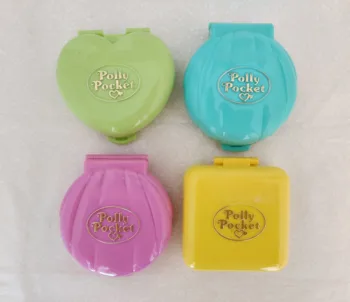
Now, coming in at number 7 on our blog of 10 toylines you loved but forgot about, we have Polly Pockets. These toys originally released in 1989 by Bluebird Toys. They featured miniature dolls inside a miniature compact case which opened up to a dollhouse. Mattel then acquired Bluebird Toys in 1998 and redesigned the appearance of Polly Pocket toys. After 1998 these once tiny figures now released in much larger, human-like detailed characters.
The original Polly Pocket dolls and sets featured a Polly character as well as Buttons, Midge, Wee Willy, a baby, and child riding a pony. These characters stood at less than an inch tall in order to fit inside the small compact case dollhouses. All characters, made from a hard plastic material, featured a hole at the bottom of their feet which allowed them to stand up inside designated parts of the compact. The compacts included stories of a themed building or area such as a cafe or house.
The 1998 Polly Pockets then began to feature a more human-like doll kind of resembling Barbie, blonde with a ponytail. Mattel also came out with “Polly Stretch” clothing for their dolls. These easily removable rubbery clothing allowed for fun dress up days and quick outfit changes. This toyline sometimes gets confused or forgotten due to the many changes and discontinuation in 2012.
8. Matchbox Cars
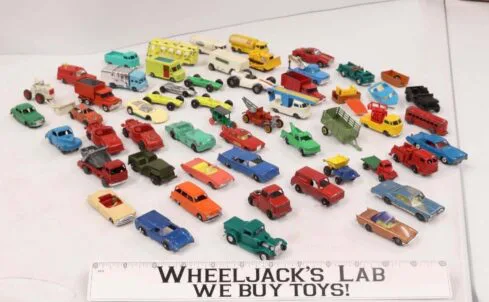
Another one of the 10 toylines you loved, at number 8, are Matchbox cars. Lesney and Rodney Smith founded the British company, Lesney Products and created Matchbox cars beginning in 1953. The toys gained their name from a founder, Jack Odell, who scaled down a road roller toy to the size that would fit inside a matchbox. The first Matchbox cars included a steamroller, cement mixer, and dumper as parts of the company’s 1-75 release. This featured 75 different car models in a matchbox sized carrier. The popularity of this toyline hit in the 1950s and 60s with Matchbox as the number one die-cast vehicles worldide in 1968.
Originally, the company intended to release just British car models but later expanded to international models and even fantasy car models. These all enhanced play for children, allowed their imaginations to grow with unique car designs, and began widespread small toy car collections. The Matchbox car popularity continued through later years, especially at Hot Wheel’s release in 1968. The company developed their own “Superfast” Matchbox line to compete, further promoting their toy cars. Then, in 1997, Mattel purchased Matchbox after the bankruptcy in 1982, bringing Matchbox and Hot Wheels under the same ownership. Although these Matchbox cars still show popularity and collectible opportunities today, their initial release and years of ultimate popularity bring many fond memories some people forgot about. When they see these old Matchbox cars, they remember their release and popularity as well as their own memories of collecting or playing with the cars.
9. My Little Pony
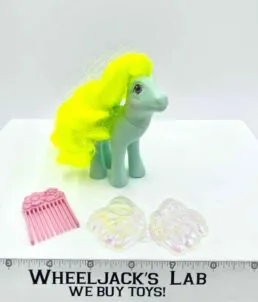
As we near the end of our list, we mention My Little Pony toys. The toyline began with a “My Pretty Pony” single colored plastic toy pony in 1981. Hasbro released this plastic pony for a year before adding new additions to the toys in 1982. This brought about smaller, more colorful plastic pony characters with colored manes. Each of these ponies featured a unique symbol on their side called “cutie marks” and flew to popularity in the 1980s. The toyline received even more popularity with the release of television specials, comic books, video games, and animated shows. With five main generations of My Little Pony toys, thousands of different characters have released over the years. Generation 1 launched in 1982, Generation 2 in 1997, Generation 3 in 2003, Generation 4 in 2010, and Generation 5 in 2021.
The 1980s saw initial success with My Little Pony from 1982 to 1992 holding over 150 million copies sold. For some time, My Little Pony even sold out Barbie during the 1980 popularity spark. However, in 1992, My Little Ponies original line discontinued. It relaunched in 1997 with less popularity than before but still remaining on the toy shelved for many children all over. Since then, many ups and downs keep the brand going with waves of popularity. With so many versions of My Little Pony out there today, many of them become lost in time. These toys, still loved today, were just as loved decades ago with the first initial release.
10. Rock ‘Em Sock ‘Em Robots
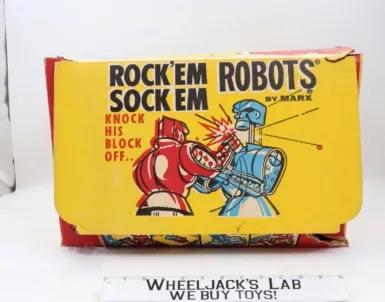
Lastly, when looking at 10 toylines you loved but forgot about, we will mention the Rock ‘Em Sock ‘Em Robots. In 1966, Marx introduced these Rock ‘Em Sock ‘Em Robots which came from the inspiration of an arcade boxing themed game. The toy featured two block-like robots standing inside a roped-off wrestling arena. Outside the arena, two controls rest for the players to control their robots and try to fight off the other in an epic dual. The controls allowed the robots to move around while the buttons on top gave the ability to move the arms in a punching motion. When one robot made a punching motion towards the other’s face, the offense robot’s head throws up off the rest of the body in an awesome defeat move. In 2000, Mattel re-released these in a version smaller than the original.
This toy showed popularity and great nostalgia from the 1960s and 70s, leaving people looking back once they find the toy again and remembering fond memories of battle and defeat through this awesome game. It remains as a pop culture icon and remembrance of it’s simplistic game design. Children and adults alike for decades played with this toy but hit initial popularity and often becomes forgettable to those who once played with the original.
Final Thoughts
Do you remember any of these 10 toylines? Each toy once held popularity and still hold significant nostalgia for so many people. Some of these no longer exist while others changed over the years or discontinued then re-released. These all bring back great memories for people as they see their old loved childhood toys.
Do You Have Old And Used Toys?
If you have a collection of old and used toys, you can turn those toys into cash. There is no reason to let those old toys collect dust. Contact us today to sell your old toy collection.
About the Author
Chris Ingledue is the founder and owner of Wheeljack’s Lab pop Culture and Toy Shop. His vision has always been to reunite customers with their favorite childhood toys and pop culture, triggering fond memories, and reigniting their imaginations. Every day he works in the “lab” where it’s Christmas 365 days a year; scouring the internet – like we did the Sears Catalog of yesteryear – for the next great treasure, awaiting the arrival of the postman as if he was Santa Claus himself and helping collectors worldwide with their own versions of Christmas. For Chris, every day as a vintage toy buyer is an absolute joy!